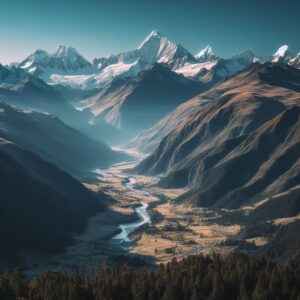Peru has witnessed a 56% decline in its tropical glaciers over the past six decades, predominantly due to climate change, as announced by a fresh government inventory publicized this Wednesday.
 The nation is recognized as holding 68% of the global tropical glaciers. Escalating temperatures have instigated melting and resulted in the birth of new mountain lagoons, which pose overflow and flood risks, as stated by the National Institute of Research of Mountain Glaciers and Ecosystems.
The nation is recognized as holding 68% of the global tropical glaciers. Escalating temperatures have instigated melting and resulted in the birth of new mountain lagoons, which pose overflow and flood risks, as stated by the National Institute of Research of Mountain Glaciers and Ecosystems.
The inventory, which includes satellite imagery till 2020, highlights that 2,084 glaciers span over 1,050 square kilometers (405 square miles) in Peru, a significant dip from the 2,399 square kilometers of ice and snow recorded in 1962.
“We have suffered a loss of nearly 6% of these high-altitude glaciers in a span of four years, from 2016 to 2020,” informed Beatriz Fuentealba, the institute’s director, noting the disappearance of many glaciers in the Ancash region.
The inventory records the formation or the impending formation of 164 lagoons over the last four years, pushing the total tally of glacial lagoons to 8,466, covering an area of approximately 1,081 square kilometers.
“The burgeoning lagoons could potentially serve as future water reserves, but their precarious locations at lofty altitudes spell risks of possible overflow and flooding,” warned Jesus Gomez, research director for glaciers at the Ministry of the Environment.
Nearly all of Peru’s tropical glaciers are nestled above 6,000 meters (19,685 feet) sea level, whereas the new lagoons are situated at altitudes ranging from 4,000 to 5,000 meters, the inventory revealed.
The glacier meltwater is pivotal to almost 20 million Peruvians, directly or indirectly, as the report underlines.
Albina Ruiz, Environment Minister, pointed out, “We have depleted more than half of our water reserves,” highlighting the impact of glacial regression on the natural mountain ecosystem.
She asserted, “While we may be unable to halt the extinction of glaciers over time, we can certainly take action to slow down their disappearance pace.” She called for pollution reduction, enhancement of green spaces, and an acknowledgment of the significance of the mountain for life.